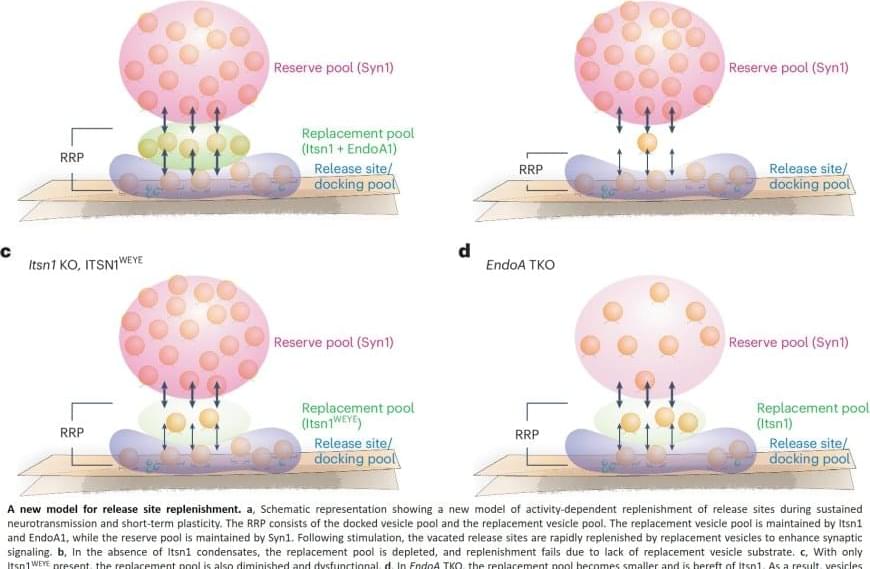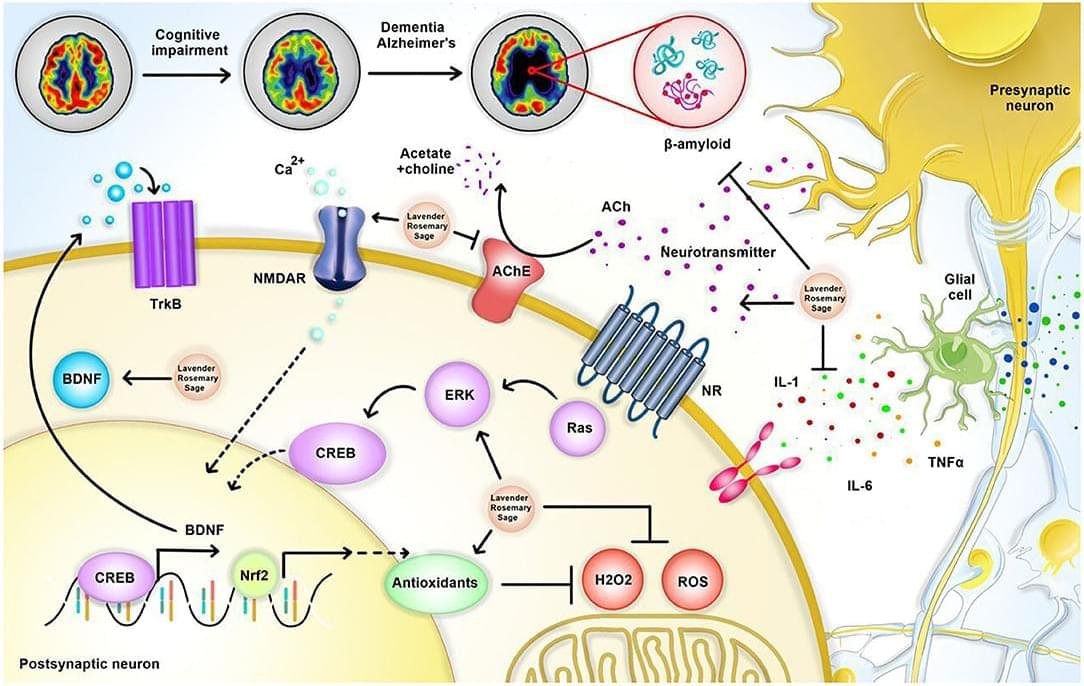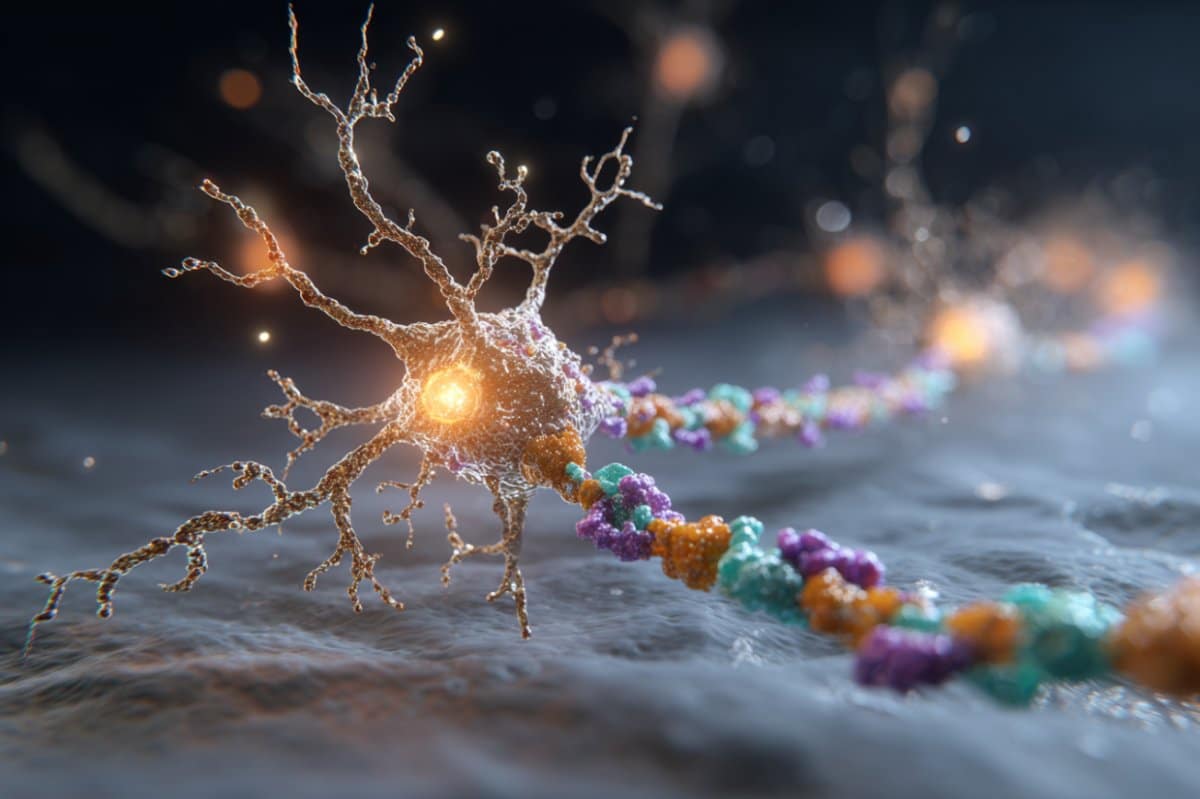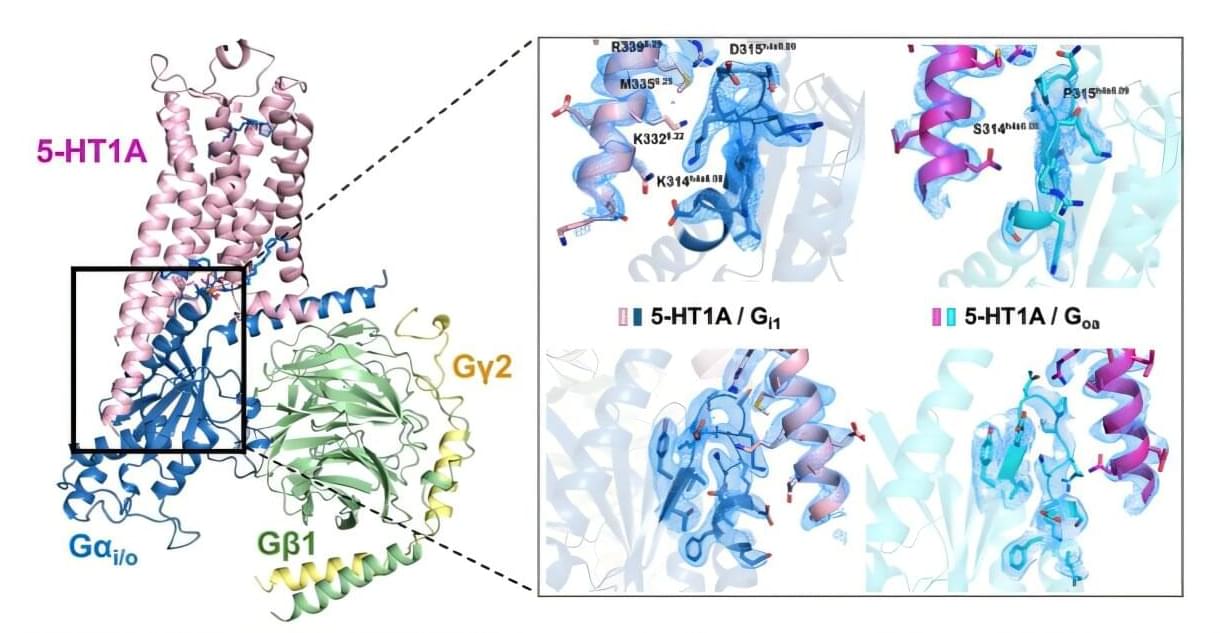As neural interfaces, cognitive augmentation, and generative models evolve at breakneck speed, we are beginning to integrate with our own creations.



Message transfer from brain cell to brain cell is key to information processing, learning and forming memories. The bubbles, synaptic vesicles, are housed within the synapse — the connection point where brain cells communicate. In typical synapses within the brains of mammals, 300 synaptic vesicles are clustered together in the intersection between any two brain cells, but only a few of these vesicles are used for such message transfer, researchers say. Pinpointing how a synapse knows which vesicles to use has long been a target of research by those who study the biology and chemistry of thought.
In an effort to better understand the operation of these synaptic vesicles, the team designed a study that first focused on endocytosis, a process in which brain cells recycle synaptic vesicles after they are used for neuronal communication.
Already aware of intersectin’s general role in endocytosis and neuronal communication, the scientists genetically engineered mice to lack the gene that codes for intersectin. However, and somewhat to their surprise, the lead says removing the protein did not appear to halt endocytosis in brain cells.
The research team refocused their experiments, taking a closer look at the synaptic vesicles themselves.
Using a high-resolution fluorescence microscope to observe where intersectin is in a synapse, the researchers found it in between vesicles that are used for neuronal communication and those that are not, as if they are physically separating the two.
To further understand the role of intersectin at this location, they used an electron microscope to visualize synaptic vesicles in action across one billionth of a meter. In all the nerve cells from mice lacking this protein, the scientists say synaptic vesicles close to the membrane were absent from the release zone of the synapse, the place where the bubbles would discharge to nearby neurons.
“This suggested that intersectin regulates release, rather than recycling, of these vesicles at this location of the synapse,” says the author.

As we age, our bodies gradually lose their ability to repair and regenerate. Stem cells diminish, making it increasingly difficult for tissues to heal and maintain balance. This reduction in stem cells is a hallmark of aging and a key driver of age-related diseases. Scientists have long debated whether this decline is the root cause of aging or a side effect. Efforts to use stem cell transplants to reverse aging have faced many challenges, such as ensuring the cells survive and integrate into the body without causing serious side effects, like tumors.
In a recent study published in Cell, researchers from the Chinese Academy of Sciences and Capital Medical University introduced a new type of human stem cell called senescence-resistant mesenchymal progenitor cells (SRCs) by reprogramming the genetic pathways associated with longevity. These cells, which resist aging and stress without developing tumors, were tested on elderly crab-eating macaques, which share physiological similarities with humans in their 60s and 70s.
The research team conducted a 44-week experiment on these macaques. The macaques received biweekly intravenous injections of SRCs, with a dosage of 2×106 cells per kilogram of body weight. The researchers found no adverse effects among the macaques. Detailed assessments confirmed that the transplanted cells did not cause tissue damage or tumors.
The researchers discovered that SRCs triggered a multi-system rejuvenation, reversing key markers of aging across 10 major physiological systems and 61 different tissue types. The treated macaques exhibited improved cognitive function, and tissue analyses indicated a reduction in age-related degenerative conditions such as brain atrophy, osteoporosis, fibrosis, and lipid buildup. 👍

Hundreds of millions of people around the world suffer from neurological disorders or have experienced them intermittently, which has significantly reduced their quality of life. The common treatments for neurological disorders are relatively expensive and may lead to a wide variety of side effects including sleep attacks, gastrointestinal side effects, blood pressure changes, etc. On the other hand, several herbal medications have attracted colossal popularity worldwide in the recent years due to their availability, affordable prices, and few side effects. Aromatic plants, sage (Salvia officinalis), lavender (Lavandula angustifolia), and rosemary (Salvia Rosmarinus) have already shown anxiolytics, anti-inflammatory, antioxidant, and neuroprotective effects. They have also shown potential in treating common neurological disorders, including Alzheimer’s disease, Parkinson’s disease, migraine, and cognitive disorders. This review summarizes the data on the neuroprotective potential of aromatic herbs, sage, lavender, and rosemary.
A neurological disorder is described as any condition that results in functional or structural damage to the nervous system. Neurological disorders account for the second main cause of death globally and the first main cause of disability as they typically cause cognitive impairment or sensorimotor dysfunction leading to reduced quality of daily life. Due to the high mortality and morbidity rate of neurological disorders, preventive and therapeutic strategies are crucial. The conventional medications administered for treating neurological disorders are associated with different adverse events; hence, the possible therapeutic effects of natural products on neurological conditions have been addressed by many researchers in the recent years (Ahmadi et al., 2022). A variety of herbal medications have gained the attraction of researchers in the last decade, due to their availability, lower price, and rare side effects (Abdel-Aziz et al., 2016).
Aromatic herbs such as sage (Salvia officinalis), rosemary (Salvia Rosmarinus), and lavender (Lavandula angustifolia) have shown promising neuroprotective effects in the recent studies (Kashani et al., 2011; Jamison, 2012; Jemia et al., 2013; Alvi et al., 2019; Mohseni et al., 2020; Caputo et al., 2021). Salvia Rosmarinus is an evergreen herb that belongs to the Lamiaceae family. Salvia Rosmarinus naturally grows in dry scrub and rocky areas in the Mediterranean regions of southern Europe to western Asia and has potential antibacterial, antifungal, antioxidant, and anti-inflammatory features (Leporini et al., 2020). The therapeutic effects of Salvia Rosmarinus on a variety of cognitive disorders such as Parkinson’s disease, neuroblastoma, glioblastoma, and epilepsy have been suggested (Park et al., 2008; de Oliveira et al., 2016; Giacomelli et al., 2016; El Alaoui et al., 2017; Yildirim and Kitis, 2020). Lavandula angustifolia is a well-known aromatic herb in the Lamiaceae family.





Males born in summer months reported higher depression symptom scores than males born during other seasons, according to a study from Kwantlen Polytechnic University. Anxiety symptoms showed no association with season of birth for either sex.
Anxiety and depression remain among the most common mental disorders worldwide, with both conditions contributing to long-term disability, physical comorbidities, and substantial economic losses. A range of factors shape mental health across the lifespan, including housing, income, education, and age. Research into early-life exposures remains limited, particularly exposures shaped by environmental seasonality.
During gestation, exposure to temperature shifts, maternal diet, seasonal infections, and variation in daylight may influence neurodevelopment. Birth season has previously been associated with risk for psychiatric conditions including schizophrenia, bipolar disorder, and schizoaffective disorder. Studies examining birth season and depression have produced mixed results, often without stratifying by sex.

In a discovery that could guide the development of next-generation antidepressants and antipsychotic medications, researchers at the Icahn School of Medicine at Mount Sinai have developed new insights into how a critical brain receptor works at the molecular level and why that matters for mental health treatments.
The study, published in the online issue of Science Advances, focuses on the 5-HT1A serotonin receptor, a major player in regulating mood and a common target of both traditional antidepressants and newer therapies such as psychedelics. The paper is titled “Structural determinants of G protein subtype selectivity at the serotonin receptor 5-HT1A.”
Despite its clinical importance, this receptor has remained poorly understood, with many of its molecular and pharmacological properties largely understudied—until now.